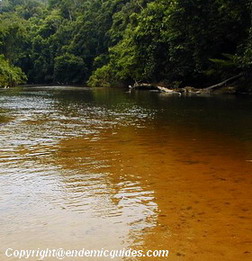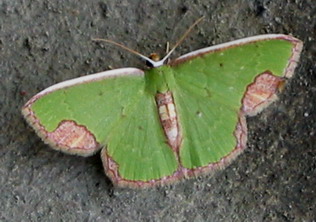|
|
|
Welcome To
TAMAN NEGARA
NP- Peninsula Malaysia
|
Introduction and history
Malaysia’s
Taman Negara, is classified as one of the world’s oldest
rainforests. Older than either the Amazon or the Congo, it
has remained undisturbed for 130 million years. Located near
the equator it is the most extensive protected area of
pristine, lowland, evergreen rainforest in the country.
Lying within the headwaters of three river systems, the
Tembeling in the south the Terengganu in the east and the
Relai-Aring-Labir in the north, this vibrant rainforest
receives rain throughout the year, approximately 2,200mm
(lowland) and 3,800mm (highland). The average temperature is
22°C to 26°C.

Taman Negara originated from Pahang State Legislation in the
Jerantut district. In 1925, an area of 9,240 hectares
surrounding Tahan Mountain was declared Tahan Mountain Game
Reserve by the British authority and a national park in
1938, comprising of three states, Kelantan, Pahang and
Terengganu. Over 1300 square kilometers of thick tropical
jungles was designated “THE GUNUNG TAHAN GAME RESERVE” and
named “KING GEORGE V NATIONAL PARK”, after the King of
England.
The creation of this park was due largely to the persistence
of one man, Theodore Hubback, Chief Game Warden of what was
then the Federated Malay States. He pestered the colonial
government relentlessly for 15 years until the region was
set aside for conservation in 1938. His enthusiasm was
carried on by subsequent state and federal governments, and
by the Department of Wildlife and National Parks. Now, it
covers a total of 4,343 sq km.

After independence in 1957, the name was later changed to
Taman Negara. The stated purpose of Taman Negara is "to
utilize the land within the park in perpetuity, for the
propagation, protection and preservation of indigenous flora
and fauna".
Taman Negara lies on sedimentary rock, with some granite and
scattered limestone. Interesting to note that a large part
of Malaysia was submerged under water several million years
ago and that, volcanic and non volcanic islands emerged and
submerged from time to time. Peninsular Malaysia only became
land during the Jurassic era. Sedimentary rocks yield
fossils and the bulk of the fossils are found in Taman
Negara.

Ten percent is lowland, below 120m with many huge trees, the
majority of which is covered with lowland dipterocarpaceous
forest. There are around 14,000 species of plants, 250
species of birds, 200 mammals and as many as 240 species of
trees that can be found within a single hectare, compared
with an average of seven for a European forest.

Evidence of human habitation within part of Taman Negara
almost 2,000 years ago came with the discovery of bronze
artifacts along the Tembeling River. One small group of
Orang Asli (Original People) the nomadic Negrito Batek still
live within the border of the park, gathering wild food and
hunting with blowpipes for countless generations. In recent
years however, they have been settled by the government in
villages, and visits to these settlements can be arranged.
Continue Page 2 >>
|
|
We need to put this advertisement to have more
source of income for this challenging economic melting.
|
|